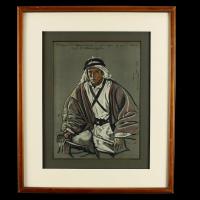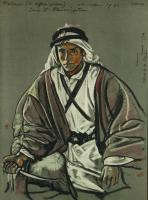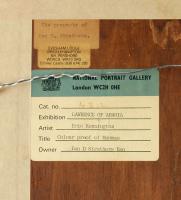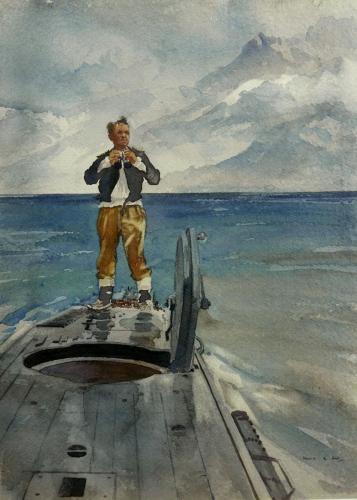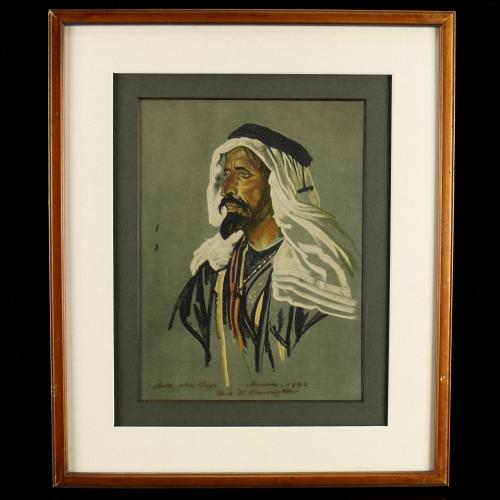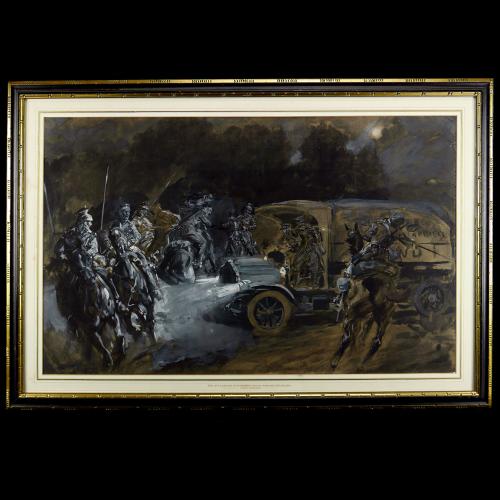
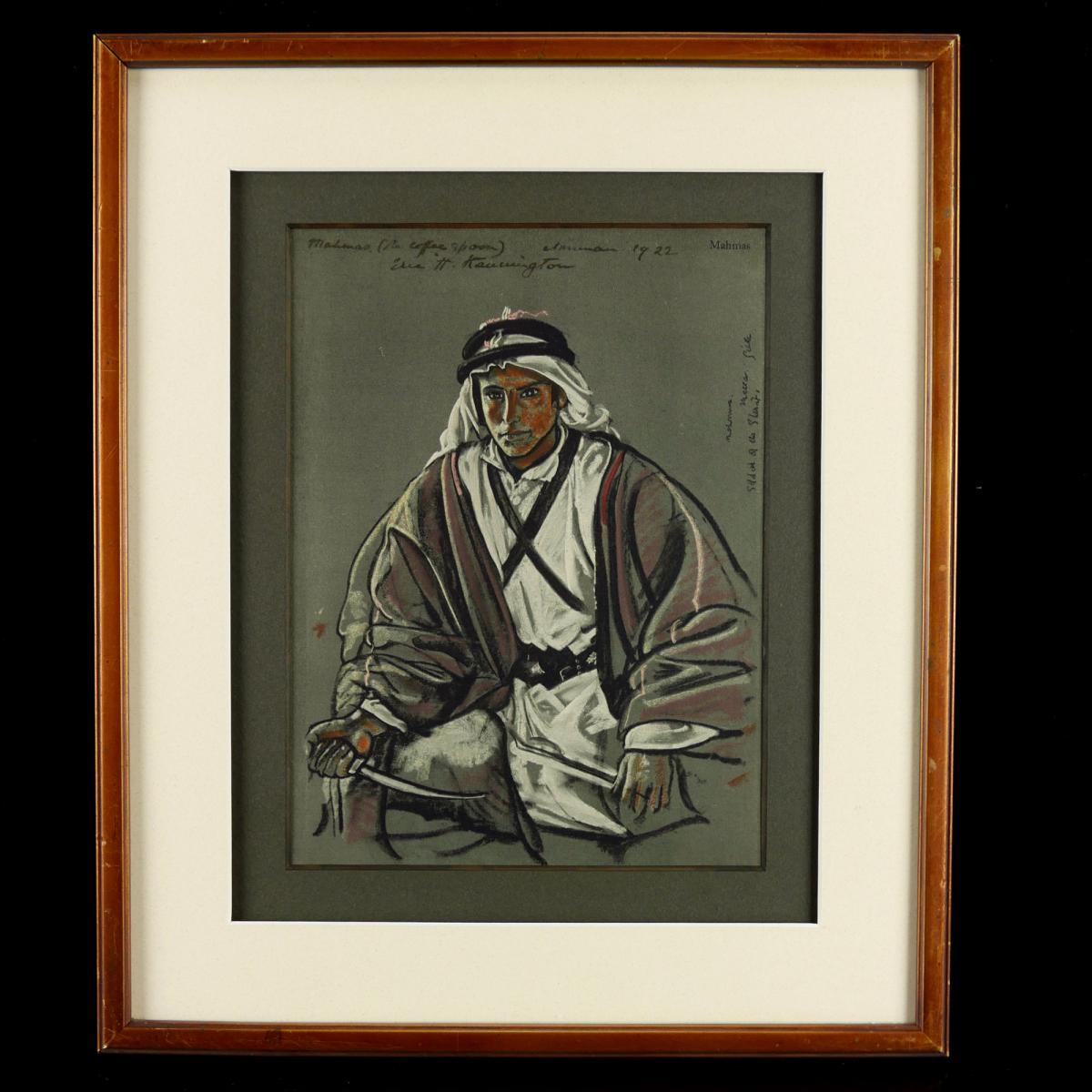
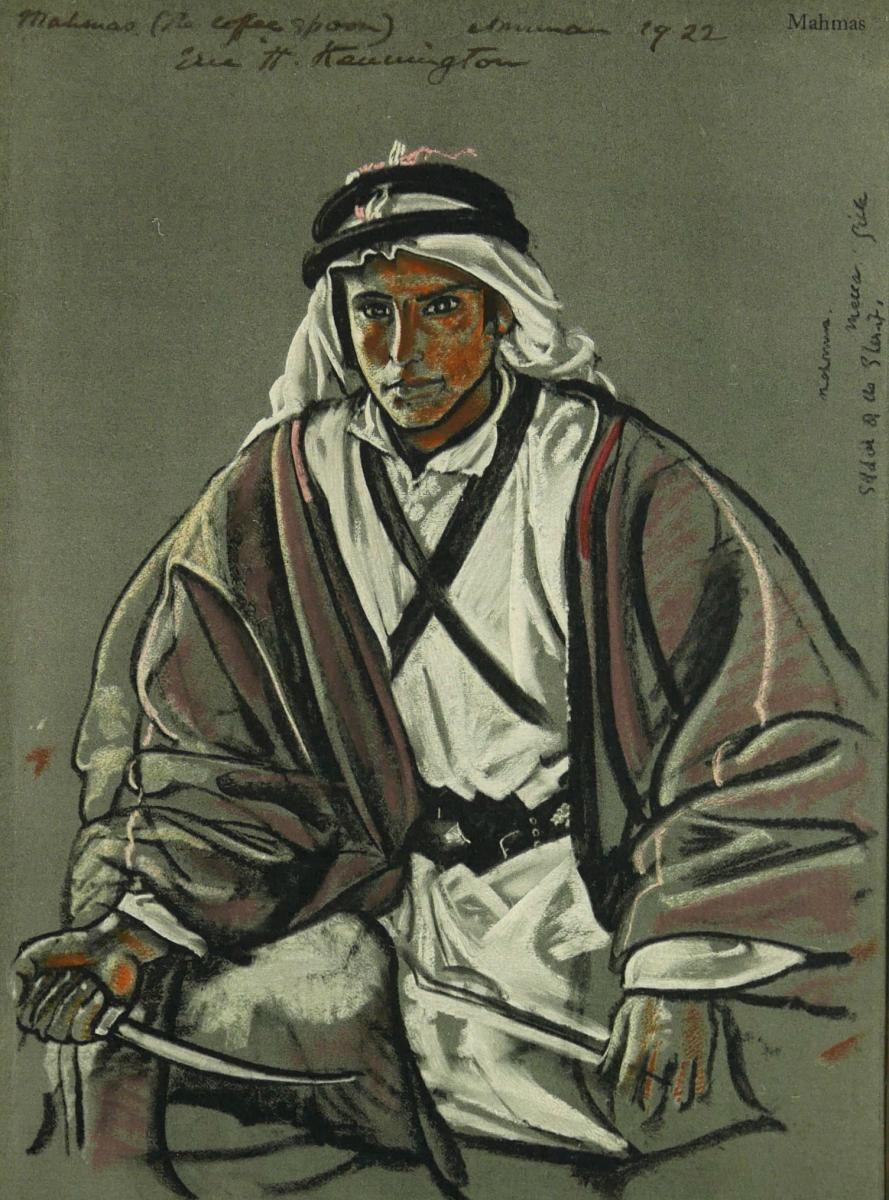
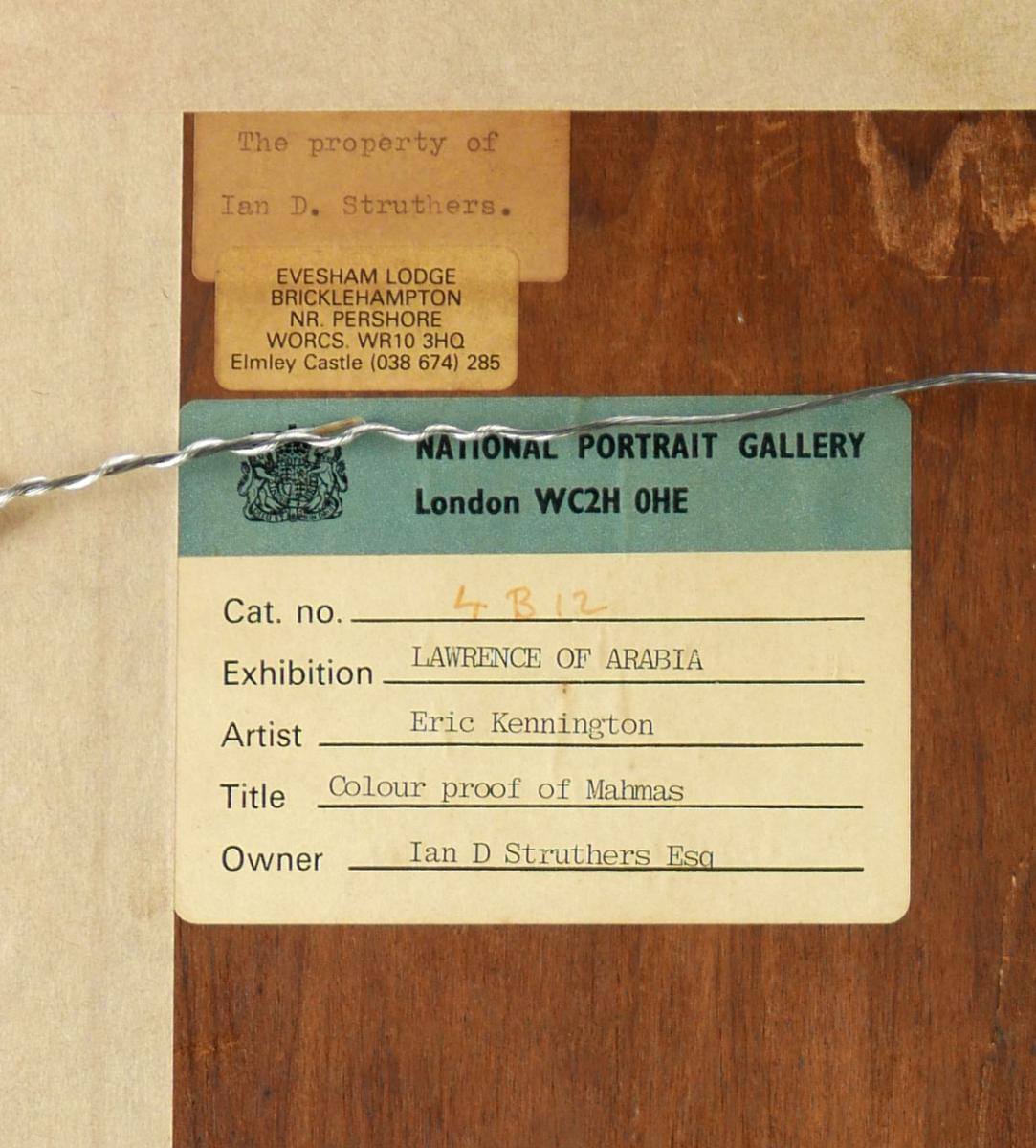
Price
£4500.00This object is eligible for a Certificate of BADA Provenance
The BADA Standard
- Since 1918, BADA has been the leading association for the antiques and fine art trade
- Members are elected for their knowledge, integrity and quality of stock
- Our clients are protected by BADA’s code of conduct
- Our dealers’ membership is reviewed and renewed annually
- Bada.org is a non-profit site: clients deal directly with members and they pay no hidden fees
Lawrence of Arabia - Portrait of Mahmas, 1926.
Overall: 25cm (10in) x 18.5cm (7.25in).
Provenance:
Eric Kennington RA (1888-1960).
Thence to the artist’s nephew.
Ian Duncan Struthers (1915-1994).
Exhibited:
National Portrait Gallery, 1988-89.
Literature:
Kennington, E.H. (1942) ‘Drawing The RAF’, pp.14,16.
Lawrence, T.E. (1926 & 1935) ‘Seven Pillars of Wisdom, A Triumph’.
Wilson, J. (1988) ’T.E. Lawrence: Lawrence of Arabia’, (NPG exhib. cat). p.100.
Chromolithograph. Artist’s annotated colour proof plate for the Subscriber’s Edition of ‘Seven Pillars of Wisdom’. Commissioned by order of T.E. Lawrence from the London printers Whittingham & Griggs Ltd. Printed title upper right ‘Mahmas’. Signed by the artist in ink upper left and centre ‘Mahmas (the coffee spoon) Amman 1922 / Eric H. Kennington’ centre. Contained in period glazed frame. The reverse bearing National Portrait Galllery Lawrence exhibition label acknowledging the ownership of the artist’s nephew, Ian D. Struthers. The original pastel is recorded as lost.
The plates for Lawrence's masterpiece of war and travel writing ‘Seven Pillars of Wisdom’ were an obsession of the author. They became one of the most technically demanding and expensive aspects of the privately-printed 1926 subscribers' edition that contained 66 illustrations and numbered a total of 211 copies. Lawrence commissioned illustrations from some of the best-known artists of the period, but the technical problems of reproducing their images accurately and to Lawrence’s satisfaction were great, as the author’s statement on the title-page of ‘Seven Pillars’ attests: 'The first experiments were made in February, 1921, and the final subject printed November 1926'.

Lawrence admired Kennington’s work as an official war artist and purposedly tracked him down to ask whether it might be possible to draw portraits based on photographs of the Arab personalities in ‘Seven Pillars’. Kennington, whose previous knowledge of Lawrence had been derived from the Lowell Thomas lectures, was fascinated by the project, and rejected the idea of working from photographs. Instead, he suggested that he should visit the Middle East and draw the Arabs from life. Shortly afterwards Lawrence was appointed to a position in the Colonial Office at the behest of Churchill, and therefore could not accompany Kennington to the Middle East as he had planned. Nonetheless, as Lawrence wrote to Robert Graves, ‘Kennington is going all the same: (that man is a great man) and as an official I’ll be able to help him even more than ever’. Kennington returned from the Middle East with a remarkable series of twenty pastels – known as his ‘Arab Portraits’. Several found their way into the collections of the Tate, the Royal Academy, and the National Portrait Gallery; the Mahmas portrait was recorded as lost by NPG, perhaps explaining why Kennington retained the present chromo-lithograph portrait. The portraits were subsequently published in ‘Seven Pillars’ in colour for the subscribers and in monochrome in later editions.
Mahmas was a Horani, of a clan of the Ateiba, a nomad tribe based inland of Medina. In Seven Pillars Lawrence described him as 'not properly of my guard, but a camel-driver'!
When Lawrence first saw Kennington's portrait he mused: 'Mahmas. That means coffee-spoon. Called so, probably, because the parents happened to notice one during his birth. . . cannot endure to be worsted in argument. When it happens he leans forward with his little knife and kills the other party. Three times he did it before people learnt to respect his convictions, however ill expressed. Kennington doubtless appreciated these remarks. When he had tried to wake Mahmas during a sitting for this portrait the Arab had leapt over me with his dagger ready about a foot from my eye. I turned away and began selecting chalks, thinking "It will go in just above the collar bone". But nothing happened, so I soon asked him to sit down again. He did, but kept the dagger ready, and it came out so in the drawing'
Ian Duncan Struthers (1915-1994), a cinematographer, was born in Argentina. His father, who was married to Kennington’s sister Anne (1884-1962), was killed in action on the Somme in October 1916 while serving with the London Scottish. Ian Struthers entered the film industry in 1933 and became a war correspondent and cameraman for Paramount’s London studio, his work records the 9th Army in Italy in 1942 and the Allied advance in Northwest Europe in 1944. He appeared in the documentary film ‘Cameramen at War’ (1943). In 1986 he contributed to the BBC television documentary ‘Lawrence after Arabia’.
The BADA Standard
- Since 1918, BADA has been the leading association for the antiques and fine art trade
- Members are elected for their knowledge, integrity and quality of stock
- Our clients are protected by BADA’s code of conduct
- Our dealers’ membership is reviewed and renewed annually
- Bada.org is a non-profit site: clients deal directly with members and they pay no hidden fees


